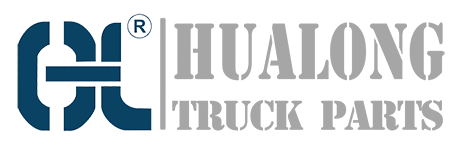The Importance of Fail Safe Mechanisms in Hydraulic Lift Cylinders
Hydraulic lift cylinders are widely used in a variety of industries, including construction, automotive, and manufacturing. These cylinders play a crucial role in lifting heavy loads and providing stability and precision. However, the potential risks associated with hydraulic systems necessitate the implementation of fail safe mechanisms to ensure the safety of operators and prevent accidents. In this article, we will explore the fail safe features that are commonly built into hydraulic lift cylinders and their significance in maintaining a secure working environment.
1. Pressure Relief Valves
One of the primary fail safe mechanisms in hydraulic lift cylinders is the pressure relief valve. These valves are designed to limit the maximum pressure that can build up within the cylinder. If the pressure exceeds a predetermined threshold, the valve opens, allowing the excess fluid to escape and preventing a potential system failure. Pressure relief valves are crucial in preventing overloading or bursting of the cylinder, which could lead to catastrophic accidents.
2. Check Valves
Check valves are another important fail safe feature in hydraulic lift cylinders. These valves allow the fluid to flow in only one direction, preventing backflow and potential loss of load control. In the event of a power failure or hydraulic system malfunction, check valves ensure that the load remains in its current position and does not suddenly drop, safeguarding both the operator and the surrounding equipment.
3. Emergency Stop Buttons
Emergency stop buttons are commonly installed on hydraulic lift cylinders to provide an immediate and convenient way to halt the operation in case of an emergency or abnormal situation. These buttons are strategically placed within easy reach of the operator and are connected to the hydraulic system's power supply. When pressed, they quickly shut off the power, stopping the cylinder's movement and preventing any potential hazards.
4. Overload Protection Systems
Overload protection systems are specifically designed to prevent excessive loading on hydraulic lift cylinders. These systems employ various techniques such as load sensors, pressure sensors, or strain gauges to monitor the load on the cylinder. If the load exceeds the safe operating limit, the overload protection system activates and triggers an alarm, stops the operation, or even immobilizes the cylinder to avoid any potential damage or accidents.
5. Flow Control Valves
Flow control valves are essential components that regulate the flow rate of hydraulic fluid within the cylinder. These valves help maintain a controlled and steady movement of the load, preventing sudden or unintended movements that may pose a safety risk. By adjusting the flow rate, flow control valves ensure smooth and precise operation, reducing the chances of accidents or damage to the hydraulic system.
6. Cylinder Position Sensors
Cylinder position sensors are used to provide real-time feedback on the position of the hydraulic lift cylinder. These sensors can detect the exact location of the piston rod, ensuring accurate control and preventing any unintended movements or deviations from the desired position. By monitoring the cylinder's position, operators can be alerted to any abnormalities or potential failures, allowing them to take appropriate action and maintain a safe working environment.
7. Redundant Systems
In critical applications where the failure of a hydraulic lift cylinder could have severe consequences, redundant systems are often implemented. Redundancy involves duplicating key components or systems to provide backup in case of primary system failure. By having redundant hydraulic circuits or multiple cylinders operating in parallel, the fail safe capabilities are significantly enhanced, minimizing the risk of accidents or operational disruptions.
8. Regular Maintenance and Inspections
An often overlooked but crucial aspect of fail safe mechanisms in hydraulic lift cylinders is the regular maintenance and inspections. Routine maintenance ensures that all components are in proper working condition, reducing the chances of unexpected failures. Inspections help identify any potential issues or wear and tear that may compromise the fail safe features. By adhering to a strict maintenance schedule and conducting thorough inspections, operators can proactively address any concerns and maintain a safe and reliable hydraulic system.
9. Operator Training and Safety Protocols
No fail safe mechanism can substitute for well-trained operators and adherence to proper safety protocols. It is essential to provide comprehensive training to hydraulic lift cylinder operators, educating them about the fail safe features, potential risks, and safe operating procedures. Additionally, establishing clear safety protocols and promoting a safety-first culture within the workplace further enhances the effectiveness of the fail safe mechanisms and minimizes the likelihood of accidents.
10. Industry Standards and Regulations
Lastly, fail safe mechanisms in hydraulic lift cylinders are guided by industry standards and regulations. These standards outline the minimum safety requirements and guidelines that manufacturers and operators must follow to ensure compliance. By adhering to these standards, such as those set by the Occupational Safety and Health Administration (OSHA) or the International Organization for Standardization (ISO), the fail safe features are designed and implemented to meet the highest safety standards, ensuring the well-being of operators and preventing potential hazards.

